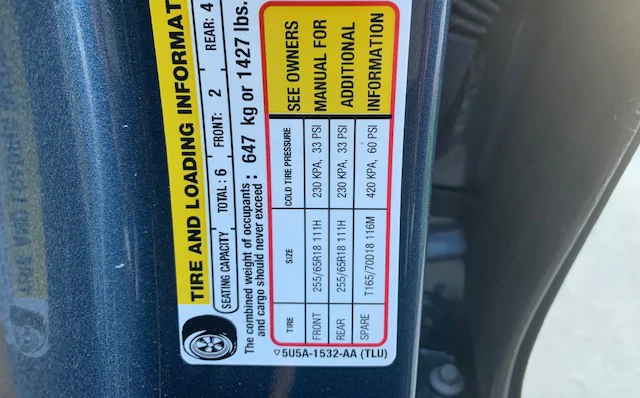How do I find the correct tire pressure for my car?
Having the correct tire pressure is extremely important for getting good gas mileage and the most life out of your tires. Your car has a specific tire pressure that will give the best gas mileage, handling, and tire life for that car, and it’s written right on the door of the car. That’s the one you should follow when filling up.
On newer cars, the recommended pressure is most commonly listed on a sticker INSIDE the driver’s door.
If there’s no sticker on the door, you can usually find the specs in the owner’s manual. Most passenger cars will recommend 32 to 35 psi in the tires when they’re cold. The reason you check them cold is that as tires roll along the road, friction between them and the road generates heat, increasing tire pressure. For the most consistent tire-pressure reading, make sure the car has been sitting overnight or at least has been parked for a few hours.
Do not inflate your tires to the pressure listed on the tire itself. That number is the maximum pressure the tire can hold, not the recommended pressure for the vehicle.
Over-inflating your tires will give you a bouncy ride and an ill-handling car, while under-inflated tires can develop premature wear from increased friction. Either way, not having your tires at their recommended pressure will negatively affect tire wear and vehicle performance.
Have any questions? Stop into an Evans Tire & Service Center location, our knowledgeable auto repair & tire experts are here to help!